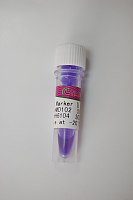Identification of Transcription Factor–DNA Interactions Using Chromatin Immunoprecipitation Assays
Expression of almost every gene is regulated at the transcription level. Therefore, transcriptional factor Transcription factors, consequently, have marked effects on the fate of a cell by establishing the gene expression patterns that determine biological processes. In the auditory and vestibular systems, transcription factors have been found to be responsible for development, cell growth, and apoptosis. It is vital to identify the transcription factor target genes and the mechanisms by which transcription factors control and guide gene expression and regulation pathways. Compared with earlier methods devised to study transcription factor–DNA interactions, the advantage of the chromatin immunoprecipitation (ChIP) assay is that the interaction of a transcription factor with its target genes is captured in the native context of chromatin in living cells. Therefore, ChIP base assays are powerful tools to identify the direct interaction of transcription factors and their target genes in vivo . More importantly, ChIP assays have been used in combination with molecular biology techniques, such as PCR and real time PCR, gene cloning, and DNA microarrays, to determine the interaction of transcription factor–DNA from a few potential individual targets to genome-wide surveys.
![预览]()






